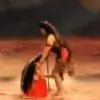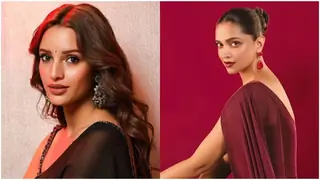@Varaali...I'm not sure if this is the right thread to post this but as we are discussing the suta comment, I thought I would share this citation re: intercaste marriages in the MB era:
The Mahahharata noisily denounces interclass relationships, insisting that people should marry within their own class. Interclass couplings are rhetorically rejected, and considered to be emblematic of vice. As one passage states: "Because of inducements of wealth, greed, lust, or lack of clarity about the varna order, or even ignorance of the varna order, intermixtures of class occur" (XIII.48.1). The most righteous marriages, therefore, are class endogamous, observing the boundaries of one's station.certain kinds of union are tolerated. These are anuloma marriages, involving the union of a high-class man with a lower-class woman. Men may marry beneath themselves, particularly in polygynous marriages, although their primary wife is still expected to be of equal rank. Women, however, are strongly discouraged from marrying low. Thus, the alliance of a hrahmana woman and a ksatriya man is actively disapproved. As king Janaka says to the hhiksunf Sulabha, assuming her to be a hrahmana, "You are a brahmana, and I a ksatriya. There is no union permitted for the two of us. Do not cause varnasamkara" (XII.308.59). Pratiloma marriages, where women marry below their class, are the source of much antipathy in the text. Children born from these marriages take the class neither of their fathers nor of their mothers. Instead, they form a series of subclasses categorized below the class of both their parents.A hrahmana woman with a ksatriya man yields a siita, which is a subclass lower than all of the four traditional varna groups. A suta earns his living as a minstrel, a bard, or a chariot driver. A hrahmana woman married to a vaisya man yields a vaidehaka. His occupation is looking after the bars and bolts for protecting the privacy of women in respectable households. The very worst of combinations is that of a hrahmana woman and a sudra man. Such a union yields a candala, a subclass that is the very lowest of the low, even lower than the sudra. All pratiloma unions are held in contempt, but the sentiment for candalas is nothing short of spiteful. The candalas are worse than the dogs of society; they are the "dog-eaters" (svapakah) the most despised of all.Whereas Sudras work as dasas and dasis in dvija homes, and dasis occasionally are even privileged to bear children for dv~a men, candalas are objects to be despised or hated. Passages in the Anusasanaparva presage the attitudes toward outcasts in later Hinduism. A hrdhmana must not allow the shadow of a candala to fall on him. If the shadow of a candala falls on a consecrated space, the space becomes immediately defiled, and so forth.Arti Dhand. Woman As Fire, Woman As Sage: Sexual Ideology in the Mahabharata (S U N Y Series in Religious Studies) (Kindle Locations 1644-1646). Kindle Edition.I'm glad we don't think in these terms in kaliyuga (at least most of us I hope) but based on this citation, can one blame Draupadi for even thinking in those terms? So what if she rejected a lower caste man? It was consistent with the beliefs of those times
King Yadu is the son of kshatriya king Yayati and brahman Devyani. Acc to cast tradition he is suta. Krishna (Yadav) is the lineage of Yadu. Many Kshatriya princess married Lord Krishna.
Also woman marrying more than one man was uncommon at that time. In fact Draupadi was the first one in dwapar yug (correct me if I am wrong). The example given of Daksh's mother was happened at the beginning of Satya Yug. The society even questioned Goddess Sita.
Sorry but I always have a question a girl strictly following tradition had married 5 men!
And why nobody object to Karn's saying of unchaste woman and VH.
I am not defending any action in VH. All were wrong
Someone pls give the source where Dhrishtadyumna stopped Karn in partcipating swayamver. .



























